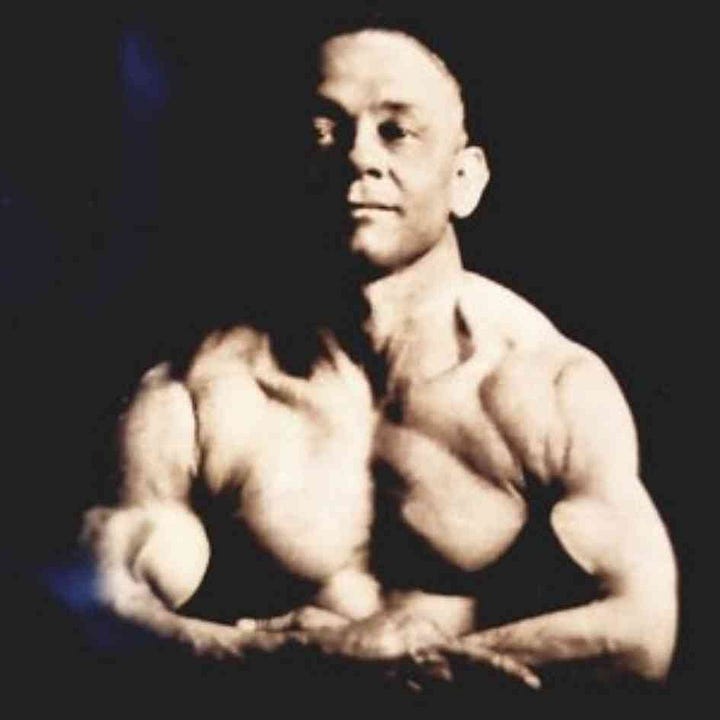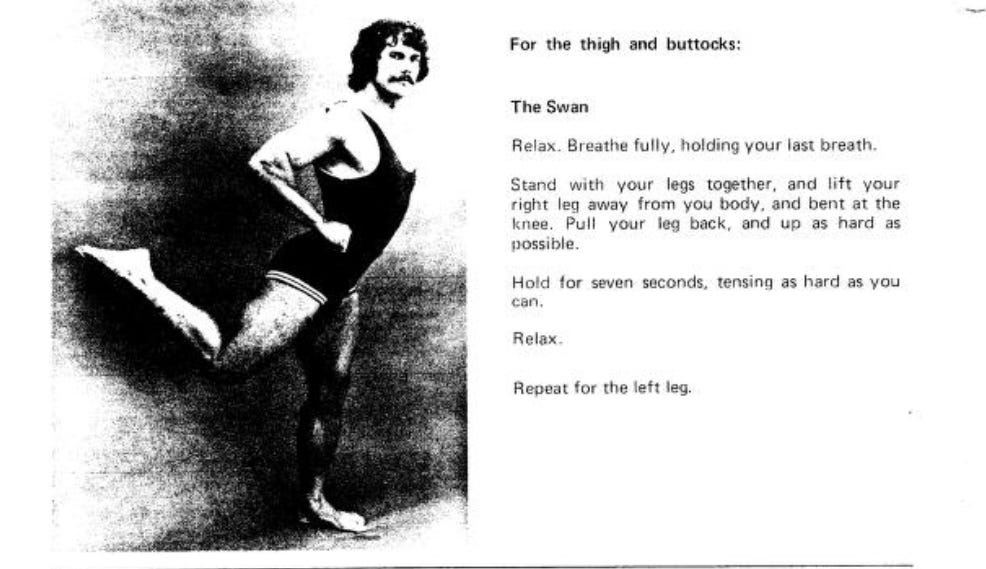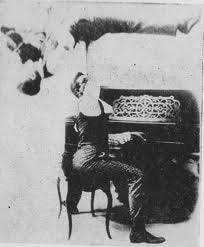Internet Archive is a great resource to find a number of interesting old-school workout books. One book, by the title of “Chi Mind Control” is from a bodybuilder who also performed strongman feats like breaking out of chains just like dudes in the early 20th century. His name is Mike Dayton.
Intro
Muscle Tension
Deviations
Wrap Up
Intro
“Nerve Power is something the old time strongmen talked about a great deal. When they said it they really meant the same thing as amny of the eastern philosophies mean when they talk about “Chi.” It is a combination of the actual nerves that run through your muscles and make things happen when your mind tells the body to move and the subtle electrical current that flows around the whole body that actually makes those nerves function.” (p 21 Justa, Iron Isometrics)
This book is titled “Chi Mind Control” but to put it simply it’s essential a book about controlling one’s emotions as well as developing one’s mind over-matter capabilities. As Mike Dayton performed strongman stunts and not just bodybuilding he had to learn ways to be successful in this endeavor. Interestingly enough one of the main tools he used to develop this mind-over-matter capabilities was tension-based exercises.
As tension-based training requires communication between the nervous system and the muscles, this over time can create greater amounts of strength or, “Nerve Power” like in the quote above.
Your Thoughts
Your Nerves
Your Connective Tissues (Tendons, Fascia, etc)
Your Muscles
Develop these to work as a unit and you can become a modern-day super soldier.
Muscle Tension
When you pick up a pencil only a few of your muscle fibers will activate. Pick up a heavy suit case you get a few more. This is why weight training is recommended for strength and muscle because the heavier the weight the more it will cause a greater number of your muscle fibers to activate. The principle behind self-generated muscle tension is that we do it ourselves. Instead of a pencil, a suitcase, or a weight, our mind becomes the dictator of our muscle activation.
Theoretically if one does this well enough their use of weights or dynamic exercise will be minimized.
Deviations
The difference between Mike Dayton’s contractions and those recommended by folks like Maxick(left), or Otto Arco(right) is that Mike says one should go all out for those 7 seconds of contraction.


The old-school folks recommended just enough tension to get the blood flowing and they believed that too much of a violent/uncontrolled contraction caused the loss of energy slowing down one’s development. Overtime, they would contract their individual muscles to high degrees of tension without too much shaking or quivering which was a sign that the contraction was uncontrolled.
Either way, I believe the simple act of contracting one’s muscles is beneficial. I’d often thought about going down this rabbit hole and making a book on the subject. The positive is that this will be free of any equipment even compared to overcoming isometrics(OCIs). However, it is more difficult to gauge one’s progress as well as to teach.
There were some speculations on Maxick’s system saying that it was a way to beat the competition of his day because his system required zero equipment and this might be true. However, you can learn a bit about a historical figure from his enemies/opponents and although most didn’t like his style they could not deny his strength-to-weight ratio.
Combing through the first edition of Mike’s book I don’t think he was aware of Maxick and his system. What likely happened is that he either stumbled on it through martial arts or what modern-day yoga did with Maxick’s training paradigm (more on this at a later date).
Wrap Up
But if a bodybuilder could find use in tension-based training apart from posing on a stage why shouldn’t we?
However, one thing Mike talks about is the interpretation of dreams and I’m not big on that.
But, overall it’s a pretty interesting book and I’ll cover some more things about it in the future.
Thank you for making it to the end and let me know your thoughts below.
Until next time.
Unrelated Video…










